The remnants of the Khmer Rouge era in Cambodia are stark reminders of the country’s tumultuous past. From the Tuol Sleng Prison to the Choeung Ek Killing Fields, these sites bear witness to the systematic brutality and dehumanization endured by millions under Pol Pot’s regime. Haunting photographs, preserved classrooms, and rows of mass graves evoke profound emotional responses, while memorials honor the resilience of survivors and the memory of victims. Uncovering the stories behind these remnants provides a deeper understanding of Cambodia’s history and the importance of ensuring such atrocities are never forgotten.
Key Points
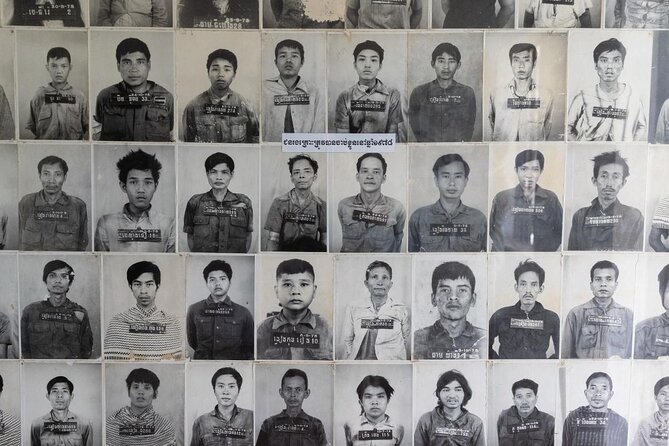
- The Tuol Sleng Museum and Choeung Ek Killing Fields serve as haunting reminders of the Khmer Rouge’s systematic brutality and dehumanization of Cambodians.
- Preserved cell blocks, torture instruments, and personal effects at Tuol Sleng provide insight into the horrors experienced by prisoners under the Pol Pot regime.
- The Choeung Ek site contains rows of mass graves and a memorial stupa displaying thousands of skulls, representing the immense scale of killings by the Khmer Rouge.
- Audio recordings of survivor testimonies at Choeung Ek offer firsthand accounts of the atrocities committed by the Khmer Rouge, highlighting the resilience of the Cambodian people.
- The tour provides an emotionally charged and educational experience, allowing visitors to pay respects to the victims and gain a deeper understanding of Cambodia’s traumatic history.
Tour Overview
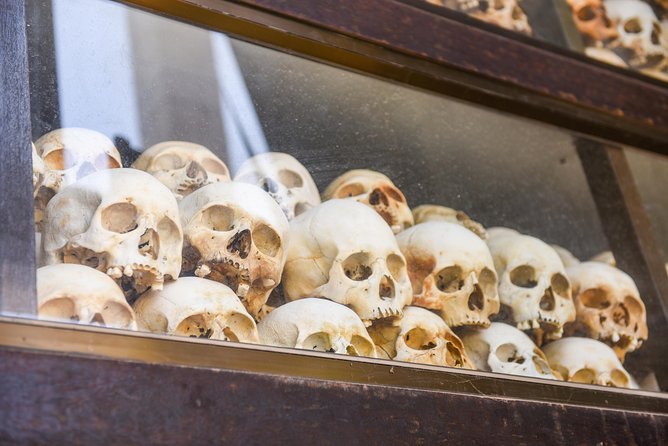
The half-day tour of Tuol Sleng Museum and Cheung Ek Killing Fields from Phnom Penh provides visitors an opportunity to explore the atrocities of the Khmer Rouge and Pol Pot regime.
The 4-hour tour focuses on this dark chapter of Cambodian history, with visits to the former S-21 Prison (Tuol Sleng) and the Killing Fields of Cheung Ek.
Professional English-speaking guides lead the way, offering insights and context that make the experience deeply impactful.
The tour includes all necessary transportation, entrance fees, and taxes, ensuring a seamless journey for travelers aged 12 and above.
Though not wheelchair accessible, the tour offers a chance to learn about this tragic history and its lasting impact on the Cambodian people.
You can also read our reviews of more tours and experiences in Phnom Penh.
Inclusions and Transportation
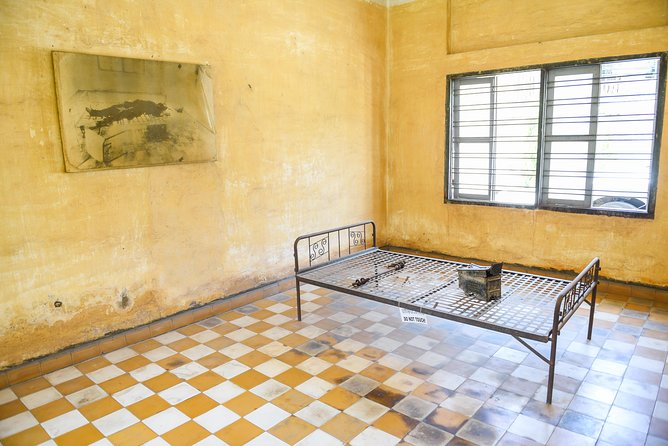
As part of the tour, the package includes a professional English-speaking guide to provide insights and context throughout the experience. Plus, transportation is provided by car, mini-van, or coach with a professional driver, ensuring a seamless journey from downtown Phnom Penh to the tour sites. The tour also covers all necessary entrance and donation fees, as well as applicable taxes and service charges. This comprehensive approach allows participants to focus on the emotional and educational aspects of the experience without logistical concerns.
| Inclusions | Transportation | Fees |
|---|---|---|
| Professional guide | Car/mini-van/coach | Entrance fees |
| Insights and context | Professional driver | Donation fees |
| Seamless journey | Pickup and drop-off | Taxes and service charges |
Important Guidelines
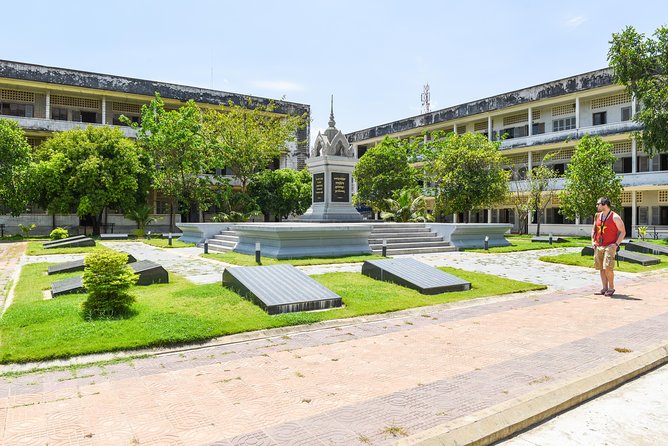
Alongside the logistical inclusions, the tour also outlines a few important guidelines for participants to consider.
Modest clothing is required, with shoulders and knees covered.
The tour isn’t wheelchair accessible, as it involves navigating unpaved roads and small boats. It’s recommended for travelers aged 12 and older.
Participants should be aware that the tour confirmation and pick-up time are subject to changes, which may incur additional charges if altered within 24 hours of the tour.
While the tour explores the harrowing history of the Khmer Rouge, it’s essential for visitors to take personal responsibility for their safety and belongings during the experience.
Customer Responsibilities
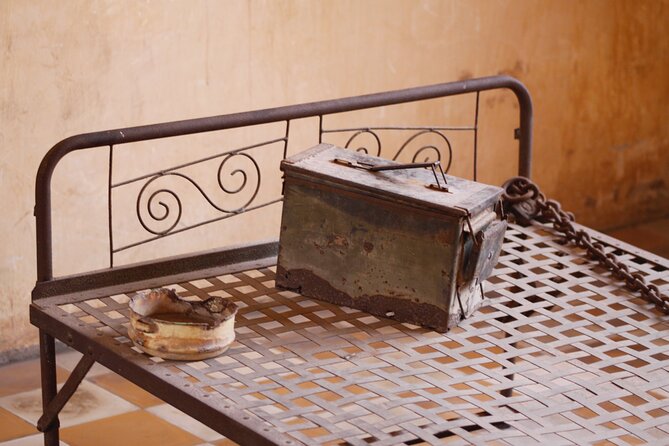
Participants must ensure their passport has at least two empty pages for visa entry before embarking on the tour.
They should also provide the correct hotel information for pick-up and drop-off to facilitate smooth transportation.
Protecting personal electronic devices from the natural elements is likewise the responsibility of the customer, as the tour organizers don’t assume liability for any damages resulting from negligence.
Customers are expected to exercise caution and care for their belongings throughout the excursion.
While the tour provider strives to offer a meaningful and memorable experience, the ultimate responsibility for one’s personal items and well-being lies with the individual participant.
Reviews and Feedback
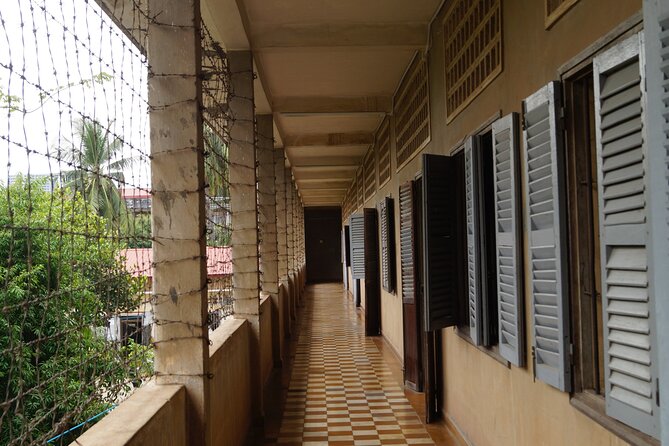
The tour has received an average rating of 4.5 out of 5 based on 14 reviews. Participants have highlighted the knowledgeable guides and the emotional impact of the experience, finding the personal context and insights provided to be invaluable.
Reviewers noted that the tour offers a profound and thought-provoking exploration of the atrocities committed during the Khmer Rouge era. While the subject matter is harrowing, the guides are skilled at providing a balanced and sensitive perspective.
Many visitors appreciated the opportunity to gain a deeper understanding of this dark chapter in Cambodia’s history and to pay respects to the victims. The tour receives high praise for its educational value and emotional resonance.
Historical Context
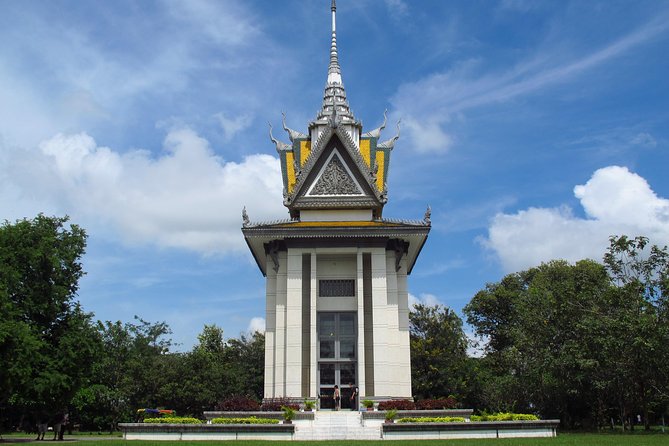
Against the backdrop of the Khmer Rouge’s brutal regime, the Tuol Sleng Museum and Cheung Ek Killing Fields stand as somber reminders of the atrocities that unfolded during this dark period in Cambodian history.
These sites offer visitors a profound and poignant glimpse into the horrors experienced by the Cambodian people under Pol Pot’s ruthless rule.
Visitors can explore:
-
The former S-21 prison, now a museum, where thousands were tortured and executed.
-
The Killing Fields, a mass grave site where an estimated 17,000 people were murdered.
-
The haunting personal effects and photographs of victims, a testament to the regime’s systematic dehumanization.
-
The enduring resilience and courage of the Cambodian people in the face of such unimaginable tragedy.
Visiting Toul Sleng
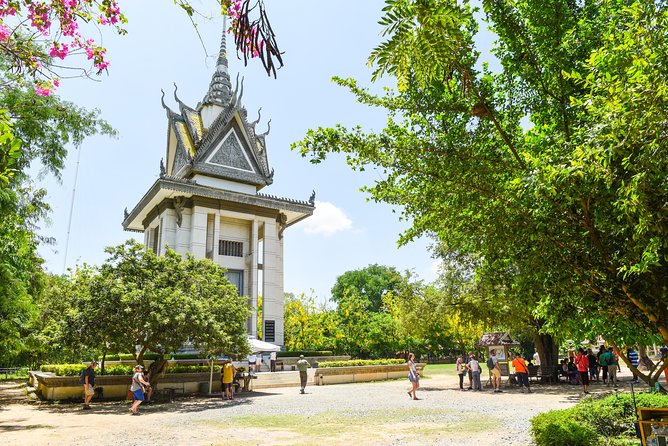
Upon entering Tuol Sleng Museum, visitors confront a somber past as they step into the former S-21 prison, a stark reminder of the Khmer Rouge’s atrocities.
The site now serves as a memorial, preserving the harrowing conditions in which thousands of prisoners were tortured and executed.
Visitors wander through the eerily preserved classrooms-turned-cells, where they encounter haunting photographs and artifacts that document the regime’s systematic brutality.
The experience is emotionally charged, offering a profound and sobering look into one of the darkest chapters of Cambodia’s history.
Through this powerful visit, travelers gain a deeper understanding of the country’s resilience in the face of unimaginable trauma.
Exploring Choeung Ek
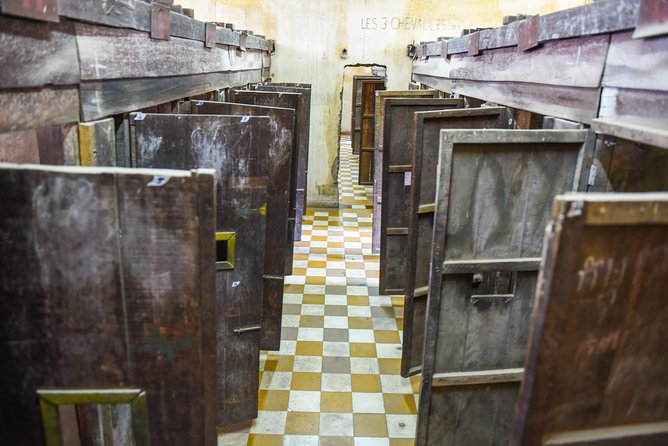
After the haunting experience at Tuol Sleng, visitors journey to the somber Choeung Ek, where the Khmer Rouge’s Killing Fields lay. Amidst the serene orchards, a palpable sadness permeates the air as one contemplates the atrocities that unfolded here. Rows of mass graves and a towering memorial stupa serve as poignant reminders of the lives lost during this dark period in Cambodia’s history.
The Choeung Ek site offers a sobering glimpse into the Khmer Rouge’s systematic murder of Cambodians:
-
Bone fragments and personal effects are still visible in the mass graves.
-
The ‘Killing Tree’ stands as a grim testament to the brutality inflicted upon victims.
-
A memorial stupa displays thousands of skulls, a chilling representation of the scale of the killings.
-
Audio recordings of survivor testimonies provide a harrowing firsthand account of the horrors.
Frequently Asked Questions
What Was the Role of the Khmer Rouge in Cambodia’s History?
The Khmer Rouge, led by Pol Pot, was a communist regime that seized power in Cambodia in 1975. They pursued radical policies that led to the deaths of an estimated 1.5-2 million Cambodians through execution, forced labor, and starvation.
How Were the Survivors of S-21 Prison Able to Rebuild Their Lives?
Many S-21 survivors faced immense trauma, but with resilience and support, they’ve rebuilt their lives. They’ve shared their stories, sought counseling, and advocated for justice to prevent such atrocities from happening again.
What Were the Typical Methods Used at the Killing Fields?
The typical methods used at the Killing Fields included bludgeoning, suffocation, and throat-slitting. Victims were often forced to dig their own graves before being killed in an efficient, brutal manner to conserve ammunition.
Are There Any Memorials or Monuments to Honor the Victims?
At the Cheung Ek Killing Fields, there’s a large memorial stupa that houses thousands of victims’ skulls, honoring those who perished under the Khmer Rouge regime. Visitors can walk through the site and pay their respects.
How Has the Khmer Rouge Legacy Impacted Cambodia’s Present-Day Society?
The legacy of the Khmer Rouge has profoundly impacted Cambodia’s present-day society. It’s left behind a traumatized population, economic challenges, and political instability. Despite this, Cambodians strive to rebuild their nation and honor the victims through memorials and education.
Recap
The remnants of the Khmer Rouge era serve as haunting reminders of Cambodia’s tumultuous past.
Visiting sites like Tuol Sleng Prison and Choeung Ek Killing Fields evokes profound emotions, honoring the memory of victims and the resilience of survivors.
These powerful experiences ensure that the atrocities committed under Pol Pot’s regime are never forgotten, and that such tragedies aren’t repeated.
More Tour Reviews in Phnom Penh
Not for you? Here's more things to do in Phnom Penh we have recnetly reviewed
- Phnom Penh: 2-Day City Highlights Tour
- 4 Best Dining Experiences In Phnom Penh
- 6 Best 2 Day Tours In Phnom Penh
- 4 Best Dinner Tours In Phnom Penh
- 25 Best Cruises And Boat Tours In Phnom Penh
- 19 Best Food Tours In Phnom Penh
- 20 Best Full-Day Tours In Phnom Penh
- 3 Best 3 Day Tours In Phnom Penh
- 3 Best 4 Day Tours In Phnom Penh
- 2 Best BBQ Experiences In Phnom Penh
- 9 Best Massage And Relaxation Services In Phnom Penh
- 9 Best Motorbike And Scooter Rentals In Phnom Penh
